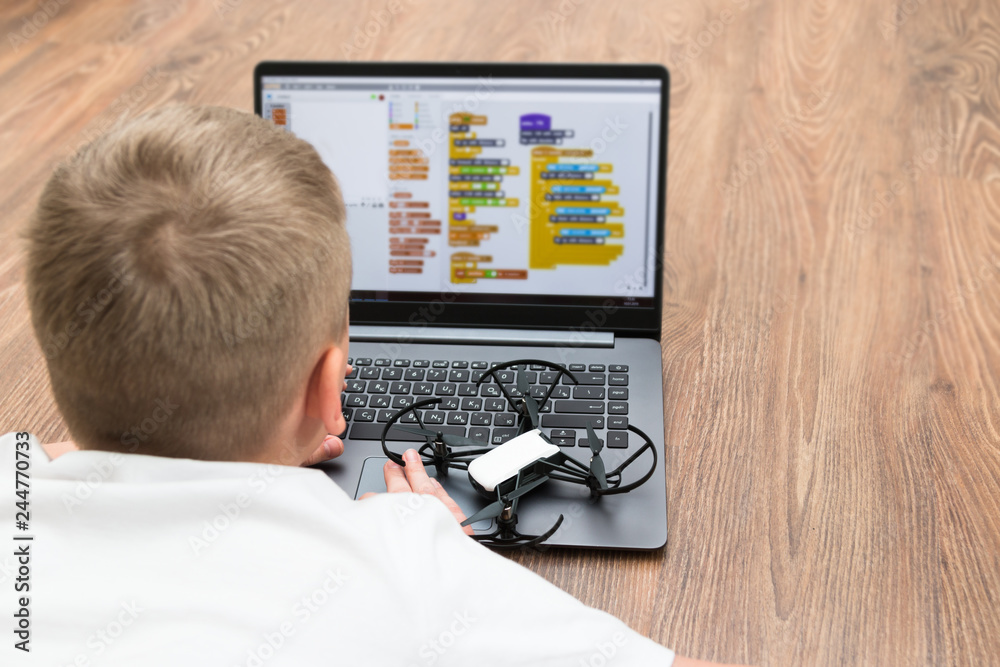
Mindful Tech, the Only Way Forward
Part 1: Debate 1
DING DING DING! It’s Monday night and the first round of our debates is in full swing. In the PRO corner stands an impressively well-versed Megan and Brittney; in the CON corner, the intimidatingly well-researched Nicole and Daryl. The match in question? Technology in the classroom enhances learning. All my money is betting on the PRO side.
Okay, okay, I’m no Michael Buffer (wait, did I just drastically age myself?). I’ll cut to the point: Before this debate, I was solely on the PRO side. As an online teacher for almost 3 years, how could I place my bets any other way? The vast majority of our class pre-voted PRO. In a world where education had to flip on a dime to embrace technology, there should be a clear winner…..or, maybe not?

PRO Points to Ponder
Megan and Brittney did an amazing job neatly outlining key advantages of technology in the classroom:
–Access to information and resources: A plethora of our textbooks are ridiculously priced while comically outdated. And with time, our colonizer roots show brightly against the backdrop of historical inaccuracies. Online updated information has a clear advantage in staying current when it’s well-sourced. Arguably, both the outdated textbooks and the (sometimes questionably sourced) online resources provide teachable moments in classrooms. Teachers, however, have to be trained and ready for those moments when they come….and they always do!
–Increases engagement and skills for success: Hands-on, interactive content is available for the next generation of learners via 1:1 laptops, Smart and Promethean boards, VR, 3D printers, gamifying, coding, robotics, the list is ever-growing. Of course, that’s IF your school has the funding for such things (a point I’ll get to….eventually in Part 2).

–Promotes collaboration and communication: Watching students enthusiastically collaborate while coding instructions for their battle-bots remains a career highlight for me. Without clear collaboration and communication, their bots lose…repeatedly. It’s a resilient mindset of lose, learn, lose, learn, win (maybe)!
–Restructures teacher time: In the article Teaching in a Digital Age: How Educators Use Technology to Improve Student Learning, Journal of Research on Technology in Education, the researchers note: “When students ask questions, rather than providing answers, [teachers] now guide them to find and identify relevant information, and to evaluate the quality and validity of that information. For students, the shift was toward active, deeper learning, which aligned well with skills students need to be successful in college and the workplace.” Honestly, who can say it better than that?
–Adaptations/accommodations: Who knows more about adaptations than students and educators these past few years? How would we have navigated learning in a pandemic without technology? Paper packages sent home (printed on photocopiers….cough, cough, technology!) and occasional teacher-student phone calls (old tech, but still tech). Not to mention, assistive technologies provide a host of accommodations for diverse learning styles and abilities, as well as visual and hearing impairments…..I could go on…

CON Points to Ponder
Again, you’ll think I bet all my money on PRO, but Daryl and Nicole brought up many clear issues I have battled over the course of my (almost) 3-year online career:
–Connections are artificial: Personally, I would argue that the relationships I have built with my online students, and students with each other, are anything but artificial. As I sit in my lonely corner office and my isolated students in their homes, our relationships seem like lifelines to a greater world. It is worth noting, however, that these online relationships are mindfully and meaningfully tended. As mentioned by Nicole and Daryl, student presence on social media accounts can often be interpreted as surface-level and disingenuous.

–Erodes social skills and relationships: First off, there’s a lot of experience in the “Zoom-room” during these debates. Despite logistical and career differences amongst our class, there seemed a general consensus that student social skills, particularly face-to-face interactions, are increasingly….aaaawkward! From behind our masks and screens, have we forgotten how to interact? After some deep-diving (using tech, of course), there’s a surprising lack of longitudinal data to back up the idea that screen-time equals social incompetencies. I shouldn’t say, however, that initial studies have been favourable. Calgary psychologist Sheri Madigan, PhD, tested over 24000 mothers/infants and “found that more time per week spent on screens at ages 24 months and 36 months was linked with poorer performance on screening tests for behavioral, cognitive and social development at 36 months” (JAMA Pediatrics, Vol. 173, No. 3, 2019). Speaking of which…

–Pulls students away from the outside world: My comments here are purely anecdotal, but I cannot abide by family meal times centering on……screens! Mom texting, dad on an “important” call, and the kidlets, tweens, and teens distracted by their tablets and apps. If that’s the focus at home, what takes precedence at school? Unless educational technology is used mindfully in the classroom, and just as mindfully stored away, will the habitual hit of dop(amine) screen time always beckon our students to their digital world? And what is the “real world” anymore, anyway? These are the questions that keep me up at night (and your insights are most welcome)!
–Tech is connected to a plethora of other health, mental and emotional issues: Obesity, sleep issues, anxiety/depression, socioeconomic disparities, limited attention spans….each one of these concerns is worthy of its own post (and does, in fact, take centre-stage in millions of research papers, books, podcasts…you get the idea). All signs point me to one main takeaway from this debate…
In the world of edtech, there are no clear winners; only shades of grey
Yes, I voted in favour of educational technology in the pre-vote, and yes, I’m part of that EC&I fraction who changed my opinion in the post-vote. GASP! I was shocked too! That’s not to say I think there were any clear winners, or the necessity for “winners”, in this debate. Like so many other things, the use of technology in the classroom requires objective consideration, and objectivity largely falls into life’s grey matter. On one hand, technological advancements will continue to take precedence in our classrooms and open up new worlds of engaged learning. On the other hand, technology poses an increasing threat to social, emotional and physical threats when used improperly. Two sides of the same coin. We cannot include technology in our classrooms for its own sake. Instead it must be used mindfully as a tool (amongst many), with clear purpose and training. Only through mindful use of technology will we be able to move forward with our students.
“[I]t’s … the instructional methods that cause learning. When instructional methods
remain essentially the same, so does the learning, no matter which medium is used to deliver
instruction.” (source)
There was so much food for thought in these debates, please let me know your main takeaways. Were you PRO, CON, or happily sitting on the fence (munching popcorn) like me?
Woo-hoo! That’s so true. I myself was on the pro side before the debate and the opposition side made me change my decision and rethink if it actually is useful for kids or not. I just loved the way you have explained each part of the debate. Guess we’ll have something common in our blogs.
Thanks Sushmeet – our wifi has been so spotty this last week after the windstorm I haven’t had a chance to read your (or anyone’s) blogs yet! I can’t wait to finally dive in though. I am really enjoying these debates though – and how it challenges my thinking. I am glad I wasn’t the only “fence-sitter”.
Great blog post Kim, it is an excellent summary of the first debate. I am glad that you posted information on the current status of research regarding the effect of social interactions on technology. I think sometimes we are quick to assume truths based on popular perceptions, but you are right to point out that we need long term studies to make strong arguments. My intuition is that student social skills are decreasing, but I cannot say so for sure because I am not the same person I was 15 years ago when I started teaching, and my experience and personal bias is a lens through which I view my classroom. I am eagerly awaiting data on the long term effects of emergency remote teaching (ERT) on students during the COVID lockdowns. I think it will be very interesting.
You’re so right Matt. It’s so easy (for me anyway) to fall into cliches: “Tech is wrecking our kids”….etc etc etc. Reading the data/challenging my preconceived notions is exactly why I wanted to take this class. I am definitely not the same person with the same teaching beliefs I was 13 years ago…let alone 3 years ago. As both a classroom and online teacher, I also can’t wait to see the long-term data. I hope we erred on the side of pessimism, and things pan out better than expected. Time will tell. Thanks for taking the time to read my blog 🙂
Great post Kim !!! I was also on the pro side before this debate. but the opposite side made me reevaluate my decision and made me rethink that is this technology a blessing or it is just in our minds. I love the way, how you present the pros and cons points in your blog. Thank you for sharing such an impressive blog about tech.
Thanks for the kind message Fasiha. I really love these debates – it challenges me to look at everything from multiple sides! Glad I’m not alone in swaying back and forth in my opinions. Next time I think I really will bring popcorn 😉
Ugh, you’re so right. In the world of ed-tech, there are definitely no clear winners and a whole heck of a lot of grey areas. I love using technology in my classroom, but it is tricky when there isn’t enough to go around. Being creative is definitely important, and using it wisely is even more important. Having kiddos on tech just to be on tech is not the purpose of technology.